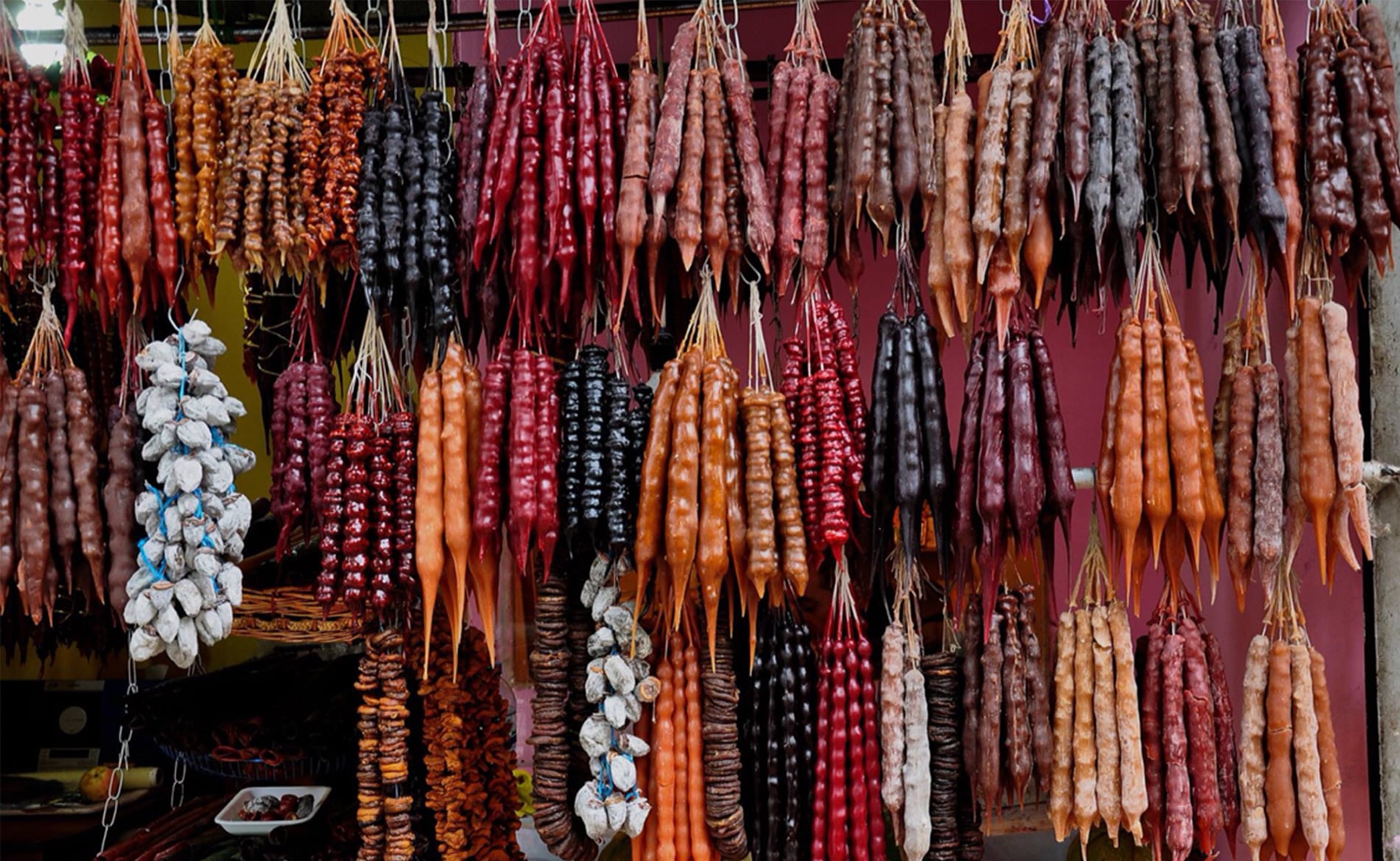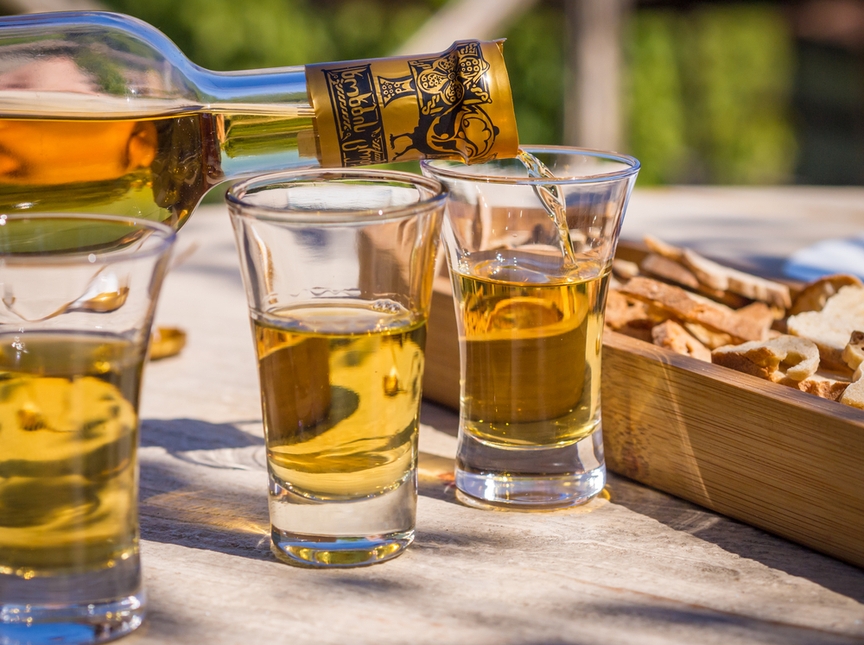With a lively restaurant and bar scene, an ancient winemaking heritage, and enough cheese production to rival Switzerland, the tiny country of Georgia may be the world’s next foodie destination – let us explain.
Not many people know about Georgian food, and after spending a week indulging in the country—from the wine region of Kakheti to the authentically cool capital of Tbilisi, and even the Black Sea coast—I can say with some degree of authority that they are missing out. Georgian food is local and effortlessly organic and seasonal (i.e. you don’t have to go in search of fresh, natural, clean eating—that’s just what’s on the menu). Most of what is eaten in Georgia is grown and made within Georgia, and with this kind of locavore, artisanal mindset, Georgia is officially on-trend. You heard it here first: Georgia is the next big country for foodies.
The food
Georgians are famously hospitable, warm, and friendly and you can see this in the way they eat: You’ll be served with plate after plate of hearty, rustic fare—big, communal dishes complemented with green herbs still maintaining freshness, straight from earth. Dishes are meant to be shared, and meals last hours. Wine is almost always involved. There’s meat (local beef, chicken stews, roasted pork, duck, and even wild turkey), but a vegetarian would hardly go hungry—not with all the locally grown wild greens, smoky aubergines, and salads of fat cucumbers and tomatoes dosed in eye-rollingly good walnut paste or tangy plum dressing called tkemali. Walnuts, hazelnuts, and flower-blossom honey can be found everywhere! Even black tea, citrus fruits, apricots, peaches, and—within the last 10 to 15 years—kiwis are grown within the country.
Now, a moment for cheese. (Oh, the glorious cheeses!) Khachapuri may be Georgia’s most iconic dish made of bread and cheese. If you’ve never heard it, I implore you to travel to Georgia immediately to try it—it’s that good. Each restaurant and region makes it differently. On the Black Sea coast, like in the restaurant Gold Fish in Batumi, you’ll be served a bread bowl cradling scalding hot cheese, a slab of butter, and a fresh egg. At the table, you scramble up the mixture to create a fondue-like delicacy.
Driving through the countryside, it’s impossible not to notice how green and lush the land is. Framed by the Greater Caucasus Mountains to the North and the Lesser Caucasus Mountains to the South, it’s quite the dramatic picture. You’ll also notice the healthy cows grazing in the wild, overgrown landscape studded with stunning medieval-era monasteries. You have those happy cows to thank for all the thick, salty local cheeses, fresh and unctuous and perfectly paired with the pastoral cornmeal bread called motsvi.
Dessert is a bit of a non-event, but worth mentioning for their bizarre form alone are the churchkhela. Strung up like sausages in varying shades of browns and purples, churchkhela is made from the juice of grapes and flour, with an interior spine of nuts (usually walnuts or hazelnuts, which are endemic to the country), these sweets aren’t especially sweet. They’re more like fruit leather.
If you’re flying into Kutaisi (and you should because Wizz Air flies direct from London Luton to Kutaisi twice a week, try lunch at the authentic Sormoni (try their homemade foraged blueberry tea) or dinner at the kitschy and fun Palaty (their signature Palaty Beef made with tarragon isn’t to be missed).
In Tbilisi, your options for good grub are practically endless. Barbarestan serves up timeless Georgian recipes inspired by an ancient cookbook—you can even see a copy and it’s currently being translated into English. Cafe Leila is a boho-chic vegetarian café in the heart of the charming Old Town (try the mozzarella-stick-like chvishzari and their bespoke walnut candies!). If you’re in the mood for a mix of the old and new, like Sulguni Ravioli (pasta made with traditional brined Georgian cheese from the Samegrelo region), head to the New York-inspired eatery, The Kitchen, housed within Rooms Hotel Tbilisi (where you should be staying if you know what’s good for you).
Named by Monocle magazine as the coolest place to stay in 2018, the indie-spirited, hipster-chic Rooms Hotel Tbilisi has already garnered quite the worldwide reputation. With an aesthetic Wes Anderson would approve of; a backbone of Georgian genuineness; and some leftover industrial, Soviet vibes; this loft-like, 8-story hotel has almost singlehandedly made Tbilisi the capital of all things cool.
The wine
We can’t talk about Georgia and not talk about wine—it’s suspected that they invented the stuff, after all. Must-visit wineries? Pheasant’s Tears Winery in the picturesque medieval town of Sighnaghi with views of the Caucasus Mountains. Try their Saperavi (a heavy red wine that Georgians call “black wine” because of its dark colour. At Iago’s Winery in Mtskheta, try the dry white local Chinuri. My advice? Skip over any of the European style wines and instead savor the all-natural, totally organic qvevri wines, where grapes—skins and stems and all—ferment with their natural yeast in large clay vessels, buried underground. This methodology dates back 8,000 years—and the Georgian devotion to this ancient heritage is simply awe-inducing.
The drinks
Chacha (pronounced like the dance) is a ubiquitous distilled spirit made from the skins and stems of the wine grapes. Chacha ranges in proof from about 40% to a butt-kicking 75%, and since most is made within the home, it’s rarely labelled. Customarily, this clear spirit is served in an alarmingly large jug alongside the meal and poured into shot glasses or sherry glasses. Sometimes, a fresh sprig of tarragon is added to the glass, but that’s about as fussy as it gets if you’re talking convention.
But blending the traditional with the modern (quite literally), mixologists from trendy city bars have started adding chacha to their craft cocktails. In Bar Room (within Rooms Hotel), you can order up a Feijoa Sour (chacha, elderflower liquor, lemon, and egg white). You’ll also find soda made with feijoa (the fruit of an evergreen shrub, which grows in Georgia), along with tarragon soda. Both of which are hands-down delightful.
After a night on the chacha or the wine, the go-to hangover cure is Borjomi, a brand of bubbly, slightly salty mineral water from the spa town of the same name. (Borjomi water is actually sold in pharmacies in Russia, which shows the legitimacy of this mythical medicinal remedy.) Personally, I would hit the khachapuri. If cheesy bread doesn’t soak up that hangover, nothing will. Gaumarjos! (Cheers!)
























Any Questions or Tips to add?